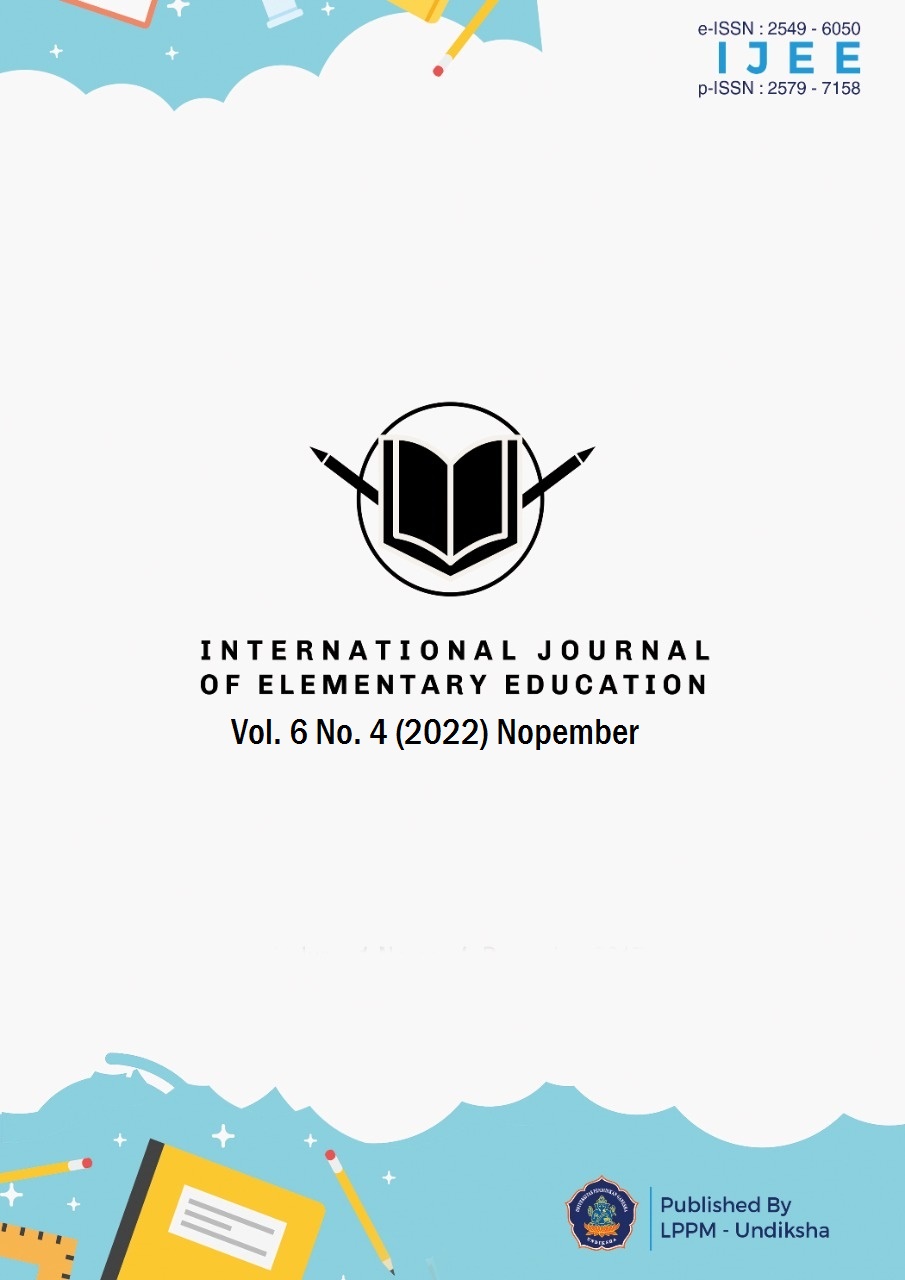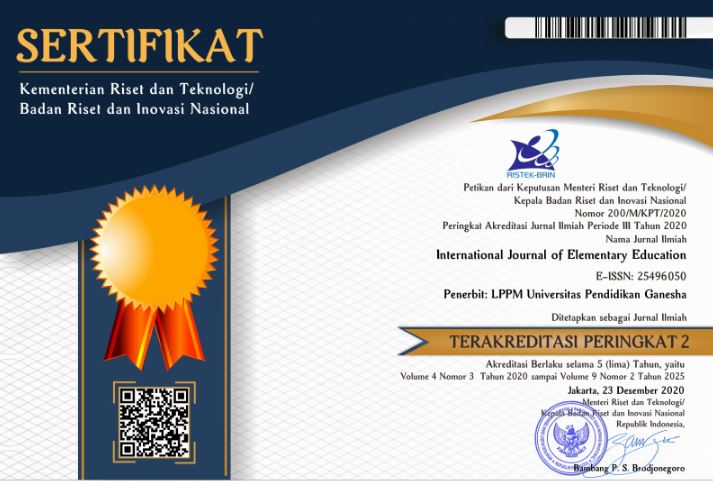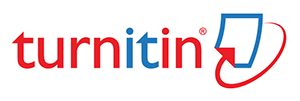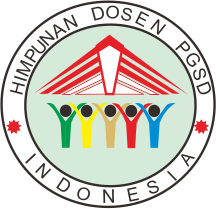Natural Resources Utilization Comic Media Based on Local Wisdom: Mount Kelud Kediri
DOI:
https://doi.org/10.23887/ijee.v7i1.53783Keywords:
Media, Comics, Local wisdom, Mount KeludAbstract
Social studies learning materials that utilize natural resources are minimal in learning media so student learning outcomes could be better. To overcome this problem, comic media based on the local wisdom of Mount Kelud has been developed. The purpose of developing comic media based on Mount Kelud Local Wisdom is to determine validity, effectiveness, and practicality. The research was conducted using R&D (Research and Development) research with the ADDIE development model. The research subjects were experts, teachers, and fourth-grade elementary school students. Collecting data using observation and questionnaire methods. The instrument used in collecting data is a questionnaire. The data analysis technique used is the quantitative analysis which is described qualitatively. The study results are that the average media validation results by media and material experts are 89%. The results of the effectiveness of using media through trials showed an increase in student learning outcomes reaching 87%. The average practicality results through teacher and student responses are 93%. Based on these results, the comic media based on the local wisdom of Mount Kelud that has been developed is valid, effective, and practical so that it is feasible to be used to support the learning process.
References
Abdurrohim, M., Tryanasari, D., & Hartini. (2020). Pengembangan E-Comic Berbasis Wayang Materi Perubahan Bentuk Energi dan Sumber Energi Alternatif Untuk Kelas IV SD. Pancar (Pendidikan Anak Cerdas Pintar), 4(2), 53–65. https://doi.org/10.52802/pancar.v4i2.4.
Aggleton, J. (2019). Defining digital comics: a British Library perspective. Journal of Graphic Novels and Comics, 10(4), 393–409. https://doi.org/10.1080/21504857.2018.1503189. DOI: https://doi.org/10.1080/21504857.2018.1503189
Akbar, S. (2015). Instrumen Perangkat Media Pembelajaran. In Remaja Rosdakarya Offset. PT Remaja Rosdakarya.
Alit, K., Adnyani, D., Wibawa, I. M. C., & Margunayasa, I. G. (2021). Alternative Energy Sources on Digital Comic Media. International Journal of Elementary Education, 5(1), 61–70. https://doi.org/10.23887/ijee.v5i1.34333. DOI: https://doi.org/10.23887/ijee.v5i1.34333
Ambarsari, R., Sartono, E. K. E., Mustadi, A., Zubaidah, E., Jhon, W., & Rafsanzani, M. A. (2021). Needs Analysis for the Development of Electronic Story Calender Media to Improve Spirit of Nationalism. Journal of Education Research and Evaluation, 5(3), 398–405. https://doi.org/10.23887/jere.v5i3.33281.
Arsyad, A. (2015). Media Pembelajaran. Raja Grafindo Persada.
Arsyad, Azhar. (2015). Media Pembelajaran. In Raja Grafindo Persada (Vol 1). Raja Grafindo Persada.
Aslamiah, A., Abbas, E. W., & Mutiani, M. (2021). 21st-Century Skills and Social Studies Education. The Innovation of Social Studies Journal, 2(2), 82. https://doi.org/10.20527/iis.v2i2.3066. DOI: https://doi.org/10.20527/iis.v2i2.3066
Azizi, M., & Prasetyo, S. (2018). Kontribusi Pengembangan Media Komik Ipa Bermuatan Karakter Pada Materi Sumber Daya Alam Untuk Siswa Mi/Sd. Al-Bidayah : Jurnal Pendidikan Dasar Islam, 9(2), 75. https://doi.org/10.14421/jpdi.2017.0902-07. DOI: https://doi.org/10.14421/jpdi.2017.0902-07
Branch, R. M. (2010). Instructional design: The ADDIE approach. In Instructional Design: The ADDIE Approach. https://doi.org/10.1007/978-0-387-09506-6. DOI: https://doi.org/10.1007/978-0-387-09506-6
Budiaman, B., Komarudin, K., Nuruddin, N., & Kustandi, C. (2021). Learning Design on Social Studies Through Digital Book in Senior High School. International Journal of Interactive Mobile Technologies (iJIM), 15(09), 154. https://doi.org/10.3991/ijim.v15i09.18435. DOI: https://doi.org/10.3991/ijim.v15i09.18435
Budiwibowo, S. (2016). Hubungan Minat Belajar Siswa Dengan Hasil Belajar IPS Di SMP Negeri 14 Kota Madiun. Gulawentah:Jurnal Studi Sosial, 1(1), 60. https://doi.org/10.25273/gulawentah.v1i1.66. DOI: https://doi.org/10.25273/gulawentah.v1i1.66
Burns, M. T. (2018). Effective Use of Comic Strip Development in an Online Learning Environment. Journal of Nutrition Education and Behavior, 50(7), S57. https://doi.org/10.1016/j.jneb.2018.04.086. DOI: https://doi.org/10.1016/j.jneb.2018.04.086
Cahyono, A., Isnandar, & Usodo, B. (2019). Implementation of Mathematical Comic on Exponent and Logarithms with 21st Century Skills - Oriented. Journal of Physics: Conference Series, 1211(1). https://doi.org/10.1088/1742-6596/1211/1/012078. DOI: https://doi.org/10.1088/1742-6596/1211/1/012078
Damayanti, I., Winarsih, M., & Deasyanti. (2020). Peningkatan Kemampuan Berfikir Kritis Melalui Model Pembelajaran Kooperatif Tipe Group Investigation pada Mata Pelajaran IPS Di Sekolah Dasar. Journal of Basic Education, 1, 14–22. https://doi.org/10.47453/edubase.v1i1.4. DOI: https://doi.org/10.47453/edubase.v1i1.41
Damopolii, I., Paiki, F. F., & Nunaki, J. H. (2022). The Development of Comic Book as Marker of Augmented Reality to Raise Students’ Critical Thinking. TEM Journal, 11(1), 348–355. https://doi.org/10.18421/TEM111-44. DOI: https://doi.org/10.18421/TEM111-44
Danaswari, R. W., Kartimi, & Roviati, E. (2013). Pengembangan Bahan Ajar Dalam Bentuk Media Komik Untuk Meningkatkan Hasil Belajar Siswa Kelas X Sman 9 Cirebon Pada Pokok Bahasan Ekosistem. Jurnal Scientiae Educaia, 2(2), 363–381. https://doi.org/10.24235/sc.educatia.v2i2.477.
Diacopoulos, M. M., & Crompton, H. (2020). A systematic review of mobile learning in social studies. Computers & Education, 154. https://doi.org/10.1016/j.compedu.2020.103911. DOI: https://doi.org/10.1016/j.compedu.2020.103911
Enteria, O., & Casumpang, P. F. H. (2019). Effectiveness of Developed Comic Strips as Intructional Materials in Teaching Specific Science Concepts. International Journal for Innovation Education and Research, 7(10), 876–882. https://doi.org/10.31686/ijier.vol7.iss10.1835. DOI: https://doi.org/10.31686/ijier.vol7.iss10.1835
Fägersten, K. B. (2017). English-language swearing as humor in Swedish comic strips. Journal of Pragmatics, 121, 175–187. https://doi.org/10.1016/j.pragma.2017.10.014. DOI: https://doi.org/10.1016/j.pragma.2017.10.014
Fajar, A. S. M., Mawardi, A. I., & Syakur, A. (2021). Environmental ethics on Mount Kelud slopes: Investigating local community responses on the utilization of Mount Kelud materials. Community Empowerment through Research, Innovation and Open Access, 156–162. https://doi.org/10.1201/9781003189206-29. DOI: https://doi.org/10.1201/9781003189206-29
Ghofur, A. (2022). Digital Comic Media on Smartphones to Improve Communication Skills. Journal of Innovation in Educational and Cultural Research, 3(3), 432–444. https://doi.org/10.46843/jiecr.v3i3.149. DOI: https://doi.org/10.46843/jiecr.v3i3.149
Heafner, T. (2004). Using technology to motivate students to learn social studies. Contemporary Issues in Technology and Teacher, 4(1), 42–53.
Herminingrum, S., & Junining, E. (2016). Socio-Cultural Life Of Kelud People In Connecting With Traditional Mitigation Effort Based On Local Wisdom. International Journal of Social and Local Economic Governance, 2(2), 127–135. https://doi.org/10.21776/ub.ijleg.2016.002.02.4. DOI: https://doi.org/10.21776/ub.ijleg.2016.002.02.4
Hobri, Adeliyanti, S., Fatekurrahman, M., Wijaya, H. T., Oktavianingtyas, E., Putri, I. W. S., & Ridlo, Z. R. (2021). E-Comic Mathematics Based on STEAM-CC and its Effect on Students Creative Thinking Ability. Journal of Physics: Conference Series, 1839(1). https://doi.org/10.1088/1742-6596/1839/1/012036. DOI: https://doi.org/10.1088/1742-6596/1839/1/012036
Istiq’faroh, N., Suhardi, & Mustadi, A. (2020). Improving Elementary School Students’ Creativity and Writing Skills Through Digital Comics. Elementary Education Online, 19(2), 426–435. https://doi.org/10.17051/ilkonline.2020.689661. DOI: https://doi.org/10.17051/ilkonline.2020.689661
Jariah, A. (2017). Pengembangan Media Pembelajaran Berbasis Komik pada Materi Proses Pembekuan Darah Kelas XI MA Madani. In Fakultas Tarbiyah dan Keguruan Uin Alauddin Makassar. https://doi.org/http://repositori.uin-alauddin.ac.id/id/eprint/4609.
Kelley, C. (2021). “Social Studies is Boring”: The Role of Student Attitude and Achievement in the Middle School Social Studies Classroom.
Khasana, I. N., Parmiti, D. P., & Sudatha, I. G. W. (2018). Pengembangan Media Monopoli Dengan Model Hannafin Dan Peck Mata Pelajaran IPS Di SD Mutiara Singaraja. Jurnal Jurusan Teknologi Pendidikan, 6(2), 205–214. https://doi.org/10.23887/jeu.v6i2.20292.
Lestari, F. P., Ahmadi, F., & Rochmad, R. (2021). The Implementation of Mathematics Comic Through Contextual Teaching and Learning to Improve Critical Thinking Ability and Character. European Journal of Educational Research, 10(1), 497–508. https://doi.org/10.12973/EU-JER.10.1.497. DOI: https://doi.org/10.12973/eu-jer.10.1.497
Lin, S. F., Lin, H. shyang, Lee, L., & Yore, L. D. (2015). Are Science Comics a Good Medium for Science Communication? The Case for Public Learning of Nanotechnology. International Journal of Science Education, Part B: Communication and Public Engagement, 5(3), 276–294. https://doi.org/10.1080/21548455.2014.941040. DOI: https://doi.org/10.1080/21548455.2014.941040
Masdiono, T. (2014). 14 Jurus Membuat Komik Ver.02. Creative Media.
Maulida, I., Dibia, I. K., & Astawan, I. G. (2020). The Development of Social Attitude Assessment Instrument and Social Studies Learning Outcomes Grade IV on Theme of Indahnya Keragaman di Negeriku. Indonesian Journal Of Educational Research and Review, 3(1), 12. https://doi.org/10.23887/ijerr.v3i2.25823. DOI: https://doi.org/10.23887/ijerr.v3i2.25823
Munadi, Y. (2013). Media Pembelajaran Sebuah Pendekatan Baru. Referensi.
Ntobuo, N. E., Arbie, A., & Amali, L. N. (2018). The Development of Gravity Comic Learning Media Based on Gorontalo Culture. Jurnal Pendidikan IPA Indonesia, 7(2), 246–251. https://doi.org/10.15294/jpii.v7i2.14344. DOI: https://doi.org/10.15294/jpii.v7i2.14344
Nurmitasari, N., Astuti, R., & Sutriningsih, N. (2020). Design Media Pembelajaran Matematika Sd Mathbibul Alaihisalam Di Era Covid-19. JURNAL e-DuMath, 6(2), 66–72. https://doi.org/10.52657/je.v6i2.1301. DOI: https://doi.org/10.52657/je.v6i2.1301
Özdemir, E. (2017). Humor in Elementary Science: Development and Evaluation of Comic Strips about Sound. International Electronic Journal of Elementary Education, 9(4), 837–850.
Paramida, S., & Permadi, A. S. (2019). Penerapan Model Pembelajaran Circuit Learning Berbantuan Media Microsoft Power Point untuk Meningkatkan Hasil Belajar IPS pada Peserta Didik Kelas IV SDN 3 Palangka Tahun Pelajaran 2016/2017. Bitnet: Jurnal Pendidikan Teknologi Informasi, 4(1), 25–29. https://doi.org/10.33084/bitnet.v4i1.529. DOI: https://doi.org/10.33084/bitnet.v4i1.529
Pribadi, B. A. (2010). Model Desain Sistem Pembelajaran (Dian Rakya).
Rahmad. (2016). Kedudukan Ilmu Pengetahuan Sosial (IPS) pada Sekolah Dasar. Jurnal Madrasah Ibtidaiyah, 2(1), 67–78. https://doi.org/10.31602/muallimuna.v2i1.742.
Reis, F., Palermo, T. M., Acalantis, L., Nogueira, L. C., Meziat-Filho, N., Louw, A., & Ickmans, K. (2022). “A journey to learn about pain”: the development and validation of a comic book about pain neuroscience education for children. Brazilian Journal of Physical Therapy, 26(1), 100348. https://doi.org/10.1016/j.bjpt.2021.04.009. DOI: https://doi.org/10.1016/j.bjpt.2021.04.009
Rengur, Z., & Sugirin, S. (2019). The Effectiveness of using Comic Strips to Increase Students’ Reading Comprehension for the Eighth Grade Students of SMPN 1 Pundong. https://doi.org/10.2991/iceri-18.2019.49. DOI: https://doi.org/10.2991/iceri-18.2019.49
Saltzman, E. B. (2022). Graphic Medicine and Radiology Nursing: Using Comics for Education and Stress Mitigation. Journal of Radiology Nursing. https://doi.org/10.1016/j.jradnu.2022.07.009. DOI: https://doi.org/10.1016/j.jradnu.2022.07.009
Santrock, W. J. (2018). Life-Span Development 17th Edition (17th ed, Vol 13). McGraw Hill.
Sapriya. (2017). Pendidikan IPS Konsep dan Pembelajaran. In Bandung: Remaja Rosdakarya.
Saputri, R. R., & Qohar, A. (2020). Development of Comic-Based Mathematics Learning Media on Social Arithmetic Topic. Journal of Physics: Conference Series, 1657, 012082. https://doi.org/10.1088/1742-6596/1657/1/012082. DOI: https://doi.org/10.1088/1742-6596/1657/1/012082
Saputro, H. B., & Soeharto. (2015). Pengembangan Media Komik Berbasis Pendidikan Karakter Pada Pembelajaran Tematik-Integratif Kelas IV SD. Jurnal Prima Edukasia, 3(1). https://doi.org/10.1016/S0002-9378(15)30176-9. DOI: https://doi.org/10.21831/jpe.v3i1.4065
Satria, E. P., Fathurohman, I., & Ardianti, S. D. (2020). Meningkatkan Hasil Belajar Siswa SD melalui Model Teams Games Tournament dan Media Scrapbook. EduBasic Journal: Jurnal Pendidikan Dasar, 2(1), 45–51. https://doi.org/10.17509/ebj.v2i1.26954. DOI: https://doi.org/10.17509/ebj.v2i1.26954
Schug, M. C., & Others, A. (1984). Why Kids Don’t Like Social Studies. Social Education, 48(5), 382–387.
Senen, A., Sari, Y. P., Herwin, H., Rasimin, R., & Dahalan, S. C. (2021). The use of photo comics media: Changing reading interest and learning outcomes in elementary social studies subjects. Cypriot Journal of Educational Sciences, 16(5), 2300–2312. https://doi.org/10.18844/cjes.v16i5.6337. DOI: https://doi.org/10.18844/cjes.v16i5.6337
Stodolsky, S. S., Salk, S., & Glaessner, B. (1991). Student Views About Learning Math and Social Studies. American Educational Research Journal, 28(1), 89–116. https://doi.org/10.3102/00028312028001089. DOI: https://doi.org/10.3102/00028312028001089
Suastra, I. W., Jatmiko, B., Ristiati, N. P., & Yasmini, L. P. B. (2017). Developing characters based on local wisdom of bali in teaching physics in senior high school. Jurnal Pendidikan IPA Indonesia, 6(2), 306–312. https://doi.org/10.15294/jpii.v6i2.10681. DOI: https://doi.org/10.15294/jpii.v6i2.10681
Sugiyono. (2016). Metode Penelitian Kuantitatif, Kualitatif dan R & D. IKAPI.
Sumardjoko, B., & Musyiam, M. (2018). Model of Civic Education Learning Based on The Local Wisdom for Revitalizing Values of Pancasila. Jurnal Cakrawala Pendidikan, 37(2), 201–211. https://doi.org/10.21831/cp.v37i2.18037. DOI: https://doi.org/10.21831/cp.v37i2.18037
Sungkharat, U., Doungchan, P., Tongchiou, C., & Tinpang-nga, B. (2010). Local Wisdom: The Development Of Community Culture And Production Processes In Thailand. International Business & Economics Research Journal (IBER), 9(11). https://doi.org/10.19030/iber.v9i11.37. DOI: https://doi.org/10.19030/iber.v9i11.37
Susanto, A. (2014). Pengembangan Pembelajaran IPS di Sekolah Dasar. Prenadamedia Group.
Suyanti, S., Sari, M. K., & Rulviana, V. (2021). Media Powtoon Untuk Meningkatkan Motivasi Belajar Siswa Sekolah Dasar. Elementary School: Jurnal Pendidikan dan Pembelajaran ke-SD-an, 8(2), 322–328. https://doi.org/10.31316/esjurnal.v8i2.1468. DOI: https://doi.org/10.31316/esjurnal.v8i2.1468
Syahrial, S., Asrial, A., Kurniawan, D. A., & Kiska, N. D. (2021). Improving Environmental Care Characters Through E-Modules Based on Local Wisdom Mangrove Ecotourism. Jurnal Ilmiah Sekolah Dasar, 5(3), 378. https://doi.org/10.23887/jisd.v5i2.35360. DOI: https://doi.org/10.23887/jisd.v5i2.35360
Syawaluddin, A., Afriani Rachman, S., & Khaerunnisa. (2020). Developing Snake Ladder Game Learning Media to Increase Students’ Interest and Learning Outcomes on Social Studies in Elementary School. Simulation and Gaming, 51(4), 432–442. https://doi.org/10.1177/1046878120921902. DOI: https://doi.org/10.1177/1046878120921902
Tekle-Haimanot, R., Pierre-Marie, P., Daniel, G., Worku, D. K., Belay, H. D., & Gebrewold, M. A. (2016). Impact of An Educational Comic Book on Epilepsy-Related Knowledge, Awareness, and Attitudes Among School Children in Ethiopia. Epilepsy and Behavior, 61, 218–223. https://doi.org/10.1016/j.yebeh.2016.05.002. DOI: https://doi.org/10.1016/j.yebeh.2016.05.002
Udayani, N. K. Ar. T. K., Wibawa, I. M. C., & Rati, N. W. (2021). Development Of E-Comic Learning Media On The Topic Of The Human Digestive System. Journal of Education Technology, 5(3), 472–481. https://doi.org/10.23887/jet.v5i3.34732. DOI: https://doi.org/10.23887/jet.v5i3.34732
Wahidin, dkk. (2021). Identifikasi Motivasi Belajar Siswa pada Pembelajaran IPS Kelas VI di Sekolah Dasar. JOEAI (Journal of Education and Instruction), 4(1), 40–46. https://doi.org/10.31539/joeai.v4i1.2152. DOI: https://doi.org/10.31539/joeai.v4i1.2152
Winarni, R., Slamet, S. Y., Poerwanti, J. I., Sriyanto, M. I., Yulisetiani, S., & Syawaludin, A. (2021). An Analysis of Preservice Elementary Teacher Ability in Creative Writing Containing Character Education with Local Wisdom Persepective. Jurnal Ilmiah Sekolah Dasar, 5(3), 498. https://doi.org/10.23887/jisd.v5i3.37069. DOI: https://doi.org/10.23887/jisd.v5i3.37069
Yuanta, F. (2019). Pengembangan Media Video Pembelajaran Ilmu Pengetahuan Sosial pada Siswa Sekolah Dasar. Jurnal Pendidikan Dasar, 1(2). https://doi.org/10.30742/tpd.v1i02.816. DOI: https://doi.org/10.30742/tpd.v1i02.816
Yulian, V. N. (2018). Developing Teaching Materials Using Comic Media to Enhance Students’ Mathematical Communication. IOP Conference Series: Materials Science and Engineering, 335(1). https://doi.org/10.1088/1757-899X/335/1/012110. DOI: https://doi.org/10.1088/1757-899X/335/1/012110
Yulianti, D., Khanafiyah, S., & Sulistyorini, S. (2016). Inquiry-based science comic physics series integrated with character education. Jurnal Pendidikan IPA Indonesia, 5(1), 38–44. https://doi.org/10.15294/jpii.v5i1.5787.
Downloads
Published
How to Cite
Issue
Section
License
Copyright (c) 2023 Kukuh Andri Aka, Hesinta Mita Aprilia, Erwin Putera Permana, Zainal Afandi

This work is licensed under a Creative Commons Attribution-ShareAlike 4.0 International License.
Authors who publish with the International Journal of Elementary Education agree to the following terms:
- Authors retain copyright and grant the journal the right of first publication with the work simultaneously licensed under a Creative Commons Attribution License (CC BY-SA 4.0) that allows others to share the work with an acknowledgment of the work's authorship and initial publication in this journal.
- Authors are able to enter into separate, additional contractual arrangements for the non-exclusive distribution of the journal's published version of the work (e.g., post it to an institutional repository or publish it in a book), with an acknowledgment of its initial publication in this journal.
- Authors are permitted and encouraged to post their work online (e.g., in institutional repositories or on their website) prior to and during the submission process, as it can lead to productive exchanges, as well as earlier and greater citation of published work. (See The Effect of Open Access)









